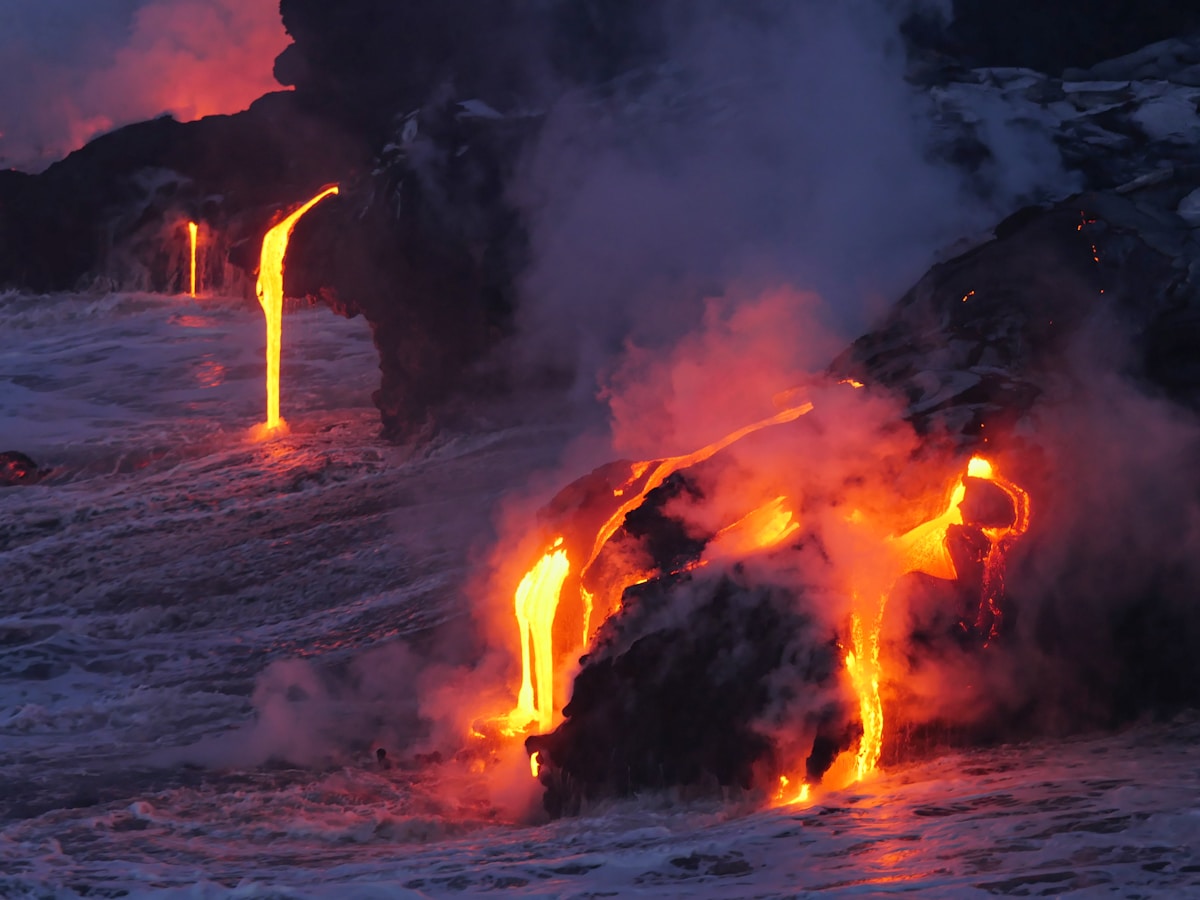The five elements system from Ayurveda is a simple yet profound tool to recognise balance in all aspects of life.
By learning this simple system, you will be able to identify the weak and strong points of your individuality and apply its balancing elements to your diet, lifestyle and environments.
In the Ayurvedic system, it is these 5 elements that form the building blocks of life. Everything in the universe is created from a certain ratio of the 5 elements.
By understanding the dominant elements inside a person, substance or environment, we are then able to know what influences will be exerted upon the body and mind. We can then find ways to increase the opposing elements to create balance or more of the desired qualities for that moment.

Fire, the element of transformation
In Sanskrit this system is known as the Pancha Maha Bhuta (Pancha means five, Maha means great, and Bhuta means elements). It is a spectrum of everything in the universe divided into 5 categories just as light can be separated into the 7 colours of the rainbow. The elements are Ether, Air, Fire, Water and Earth which are listed from the subtle, light and intangible to the heavy, dense and gross.
It is important to understand that English terms used for the elements cannot be taken literally. Rather, they represent properties and forces that work together. An example of this is that liquid water will have minerals inside it that are dominantly the earth element; the space between the atoms will be dominant Ether; if it is warm then fire is present, and as it evaporates or moves into vapour, then air is present. We could definitely say that running water would be dominant in the water element, but it is not a literal translation of the water element in the Ayurvedic system.
Main uses of the 5 element system amongst Ayurveda:
- To define balance in environmental situations and weather influences
- As the building blocks of the
- As the building blocks that are used by each
- As the building blocks that are used by each dhatu (body tissue)
- As the building blocks of the gurvadi gunas (20 opposing qualities)
- As a system to individualise diet, exercise and lifestyle prescriptions
Ether or Akasha

This is the most subtle element in the universe and has a certain mystical quality about it. “Akasha” in Sanskrit translates to all-enclosing, omnipresent or all-pervading. It is the space or home within which all objects of the universe exist.
Modern physics also accepts ether to be the root cause of all other elements. According to the Encyclopaedia Britanica, “everything in the material universe consists of ether, and matter itself being in all probability one of its modifications”.
Modernists recognise matter as a manifestation of ether and energy. It is akin to the highest vibration of sound and cannot be perceived directly through the 5 senses, although we can be aware of it in other ways. It is expansive, empty and has no resistance.
As the first expression of consciousness moving into creation, ether’s importance and medicinal uses are highly regarded. Within the body the ether element is dominantly represented by the empty spaces within atoms and the ethereal body. It governs the sense of hearing and the action of the mouth and vocal cords which both move through the ether element and subtle vibrations.
Modern Ayurvedic scholars believe ether to be associated with nuclear energy and its unseen stored potential.
Its qualities are: clear, light, subtle, soft and immeasurable.
Air or Vayu

The main principle of air is movement. Any time there is motion then we know air must be present. Although the word vayu translates directly to wind or air, its meaning is far deeper and no single word could ever explain the full spectrum of this great element.
As consciousness continues to move along the spectrum of the elements away from ether and towards form, the air element is the point where it takes on a particular direction or goal; an idea of what to move towards. It has a tendency to be erratic and quickly move in another direction.
Within the body, it predominantly manifests as the electrical energy in the nervous system, movement of all tissues and cell functions, and the formation of gases. It governs all of the senses due to its affinity with the nervous system and specifically the sense of touch and the action of the hands to give, receive and move things.
Modern Ayurvedic scholars believe it to be associated with electrical energy.
Its qualities are: mobile, dry, light, cold, rough and subtle.
Fire or Agni

The main principle of fire is transformation and metabolism. From modern science we know that every molecule will release or take in heat during its transformation into a new molecule.
Within the body it predominantly manifests as the fire of intelligence and comprehension, balance of body temperature, the absorption and assimilation of food and the transformative power of the liver. The properties of fire are carried through the body by the blood and if the blood flow is stopped then that limb will become cold.
From the creation perspective this is the point where we focus energy toward a certain idea or goal and use the fire of transformation and our intelligence to start bringing it into form. It governs the sense of sight and the action of the legs that take us towards our goals.
Modern Ayurvedic scholars believe it to be associated with radiant energy such as the light from a candle or the sun.
Its qualities are: hot, sharp, light, dry and subtle.
Water or Jala

The main principle of water is transportation. In modern science, water is known as the universal solvent because of its ability to dissolve other substances and suspend them in its medium.
Within the body it predominantly manifests as the plasma and lymph which transport nutrients to the cells, and toxins away from cells; it is the river upon which life flows.
As consciousness continues to move towards form, this is the point where an idea that has been focused upon, now needs nourishment and connectedness to take form. Water governs the sense of taste and the action of reproduction through the genital organs.
Modern Ayurvedic scholars believe it to be associated with chemical energy.
Its qualities are: cool, liquid, dull, soft, oily and slimy.
Earth or Prithvi

The main principle of earth is structure. Anywhere there is stability, permanence and rigidity there will be a dominance of earth. It cradles and holds all creatures of the planet giving them support, food and shelter.
Within the body it predominantly manifests as the solid structures such as bones, muscles, cartilage, nails, hair, teeth and skin. From the creation perspective it is the point where consciousness fully takes form and becomes a substance or being that has more solidity and form. It governs the sense of smell and the action of excreting waste products such as faeces.
Modern Ayurvedic scholars believe earth to be associated with mechanical energy.
Its qualities are: heavy, dull, constant, dense, hard and gross.
The Elements at Work in Our Lives
When in balance, these 5 elements would normally sustain life. But when out of balance they will create discomfort and threaten life. This elemental imbalance in the body will show up as a dysfunctional expression of one of the qualities that are associated with that element.
The easiest example to understand would be exposing our body to excessive wind where we would become cold and have dry skin. The wind would have caused an excess, or imbalance, of the air element, so we start to see the properties of air increase in a harmful way for example dryness or cold.
With greater understanding of this system, we can identify more complex associations and discover specific treatments for any excess element. For example, fear affects the nervous system, and would increase the air element in the body and mind. Thus over time the imbalance of extra air (fear and worry) is likely to create coldness and dry skin.
By using this 5 element system we would know that the opposing elements could be used for balance, such as water. We could find a way to bring in the element of water in many forms such as love, sweetness, flowing and rhythmic exercise, good fats and oils used both in the diet and on the skin. These would all help to balance the excess air and thus reduce the tendency toward fears and worries.

The chart above lists the 5 elements and their dominant aspects of life. It is very useful and I advise you to print out the PDF version and place it somewhere for regular reference so you can begin to master this wonderful system.
To download the high quality version of my 5 Elements chart, please visit this webpage.
Wishing you health and prosperity,
Kimmana